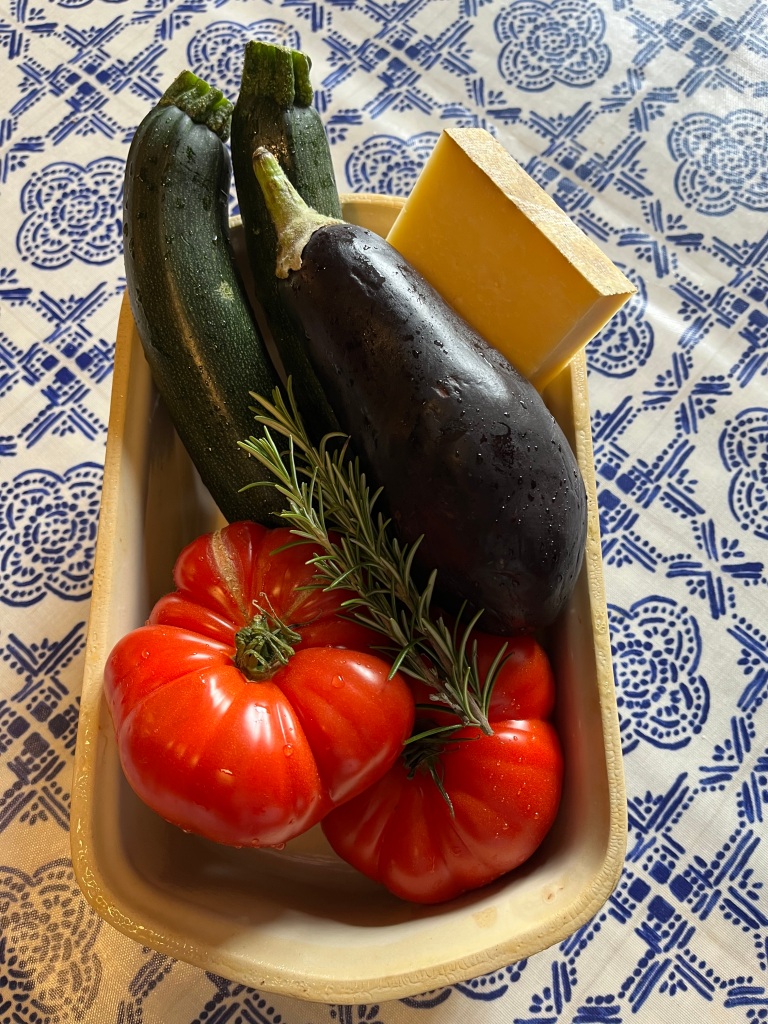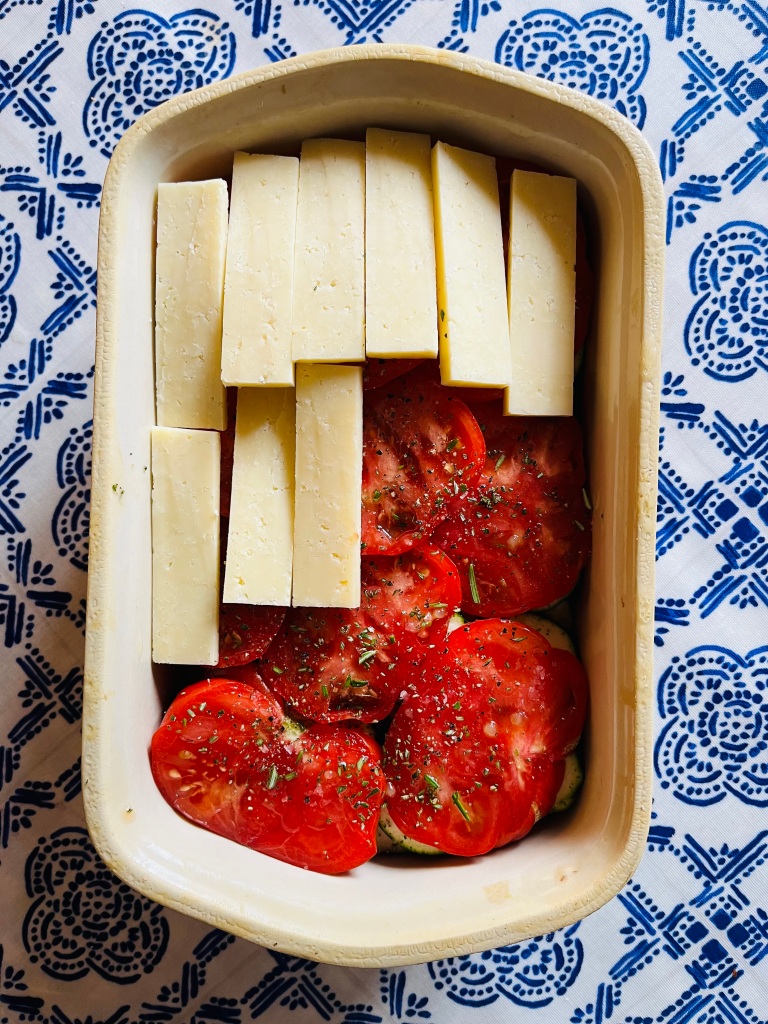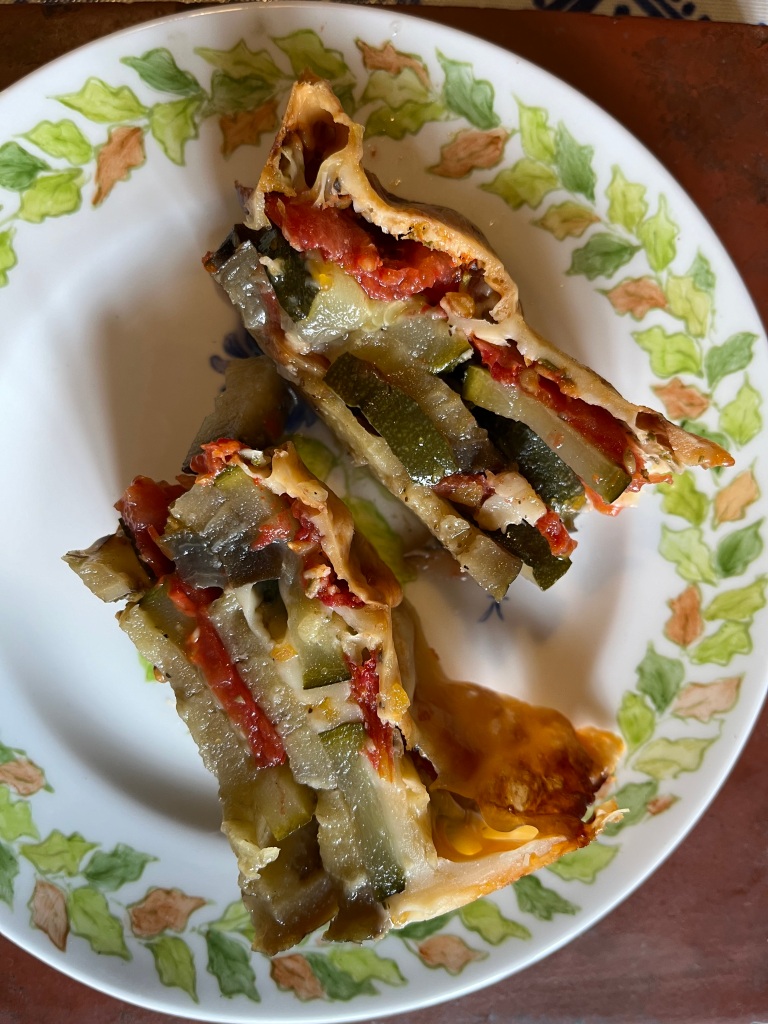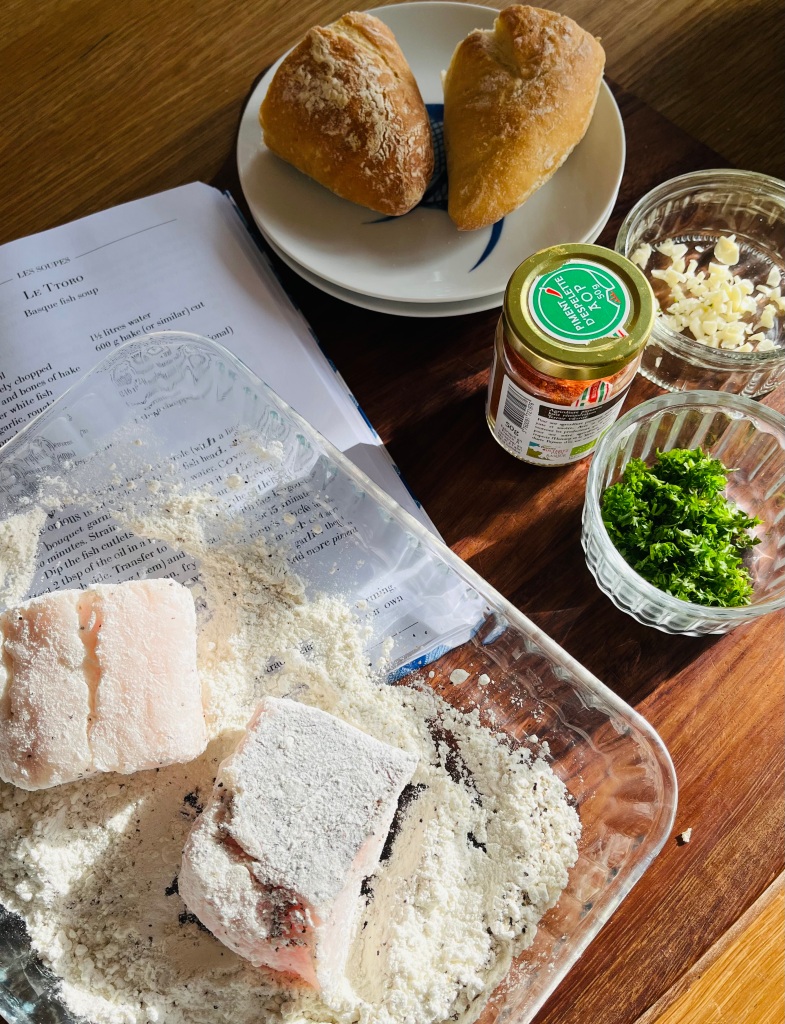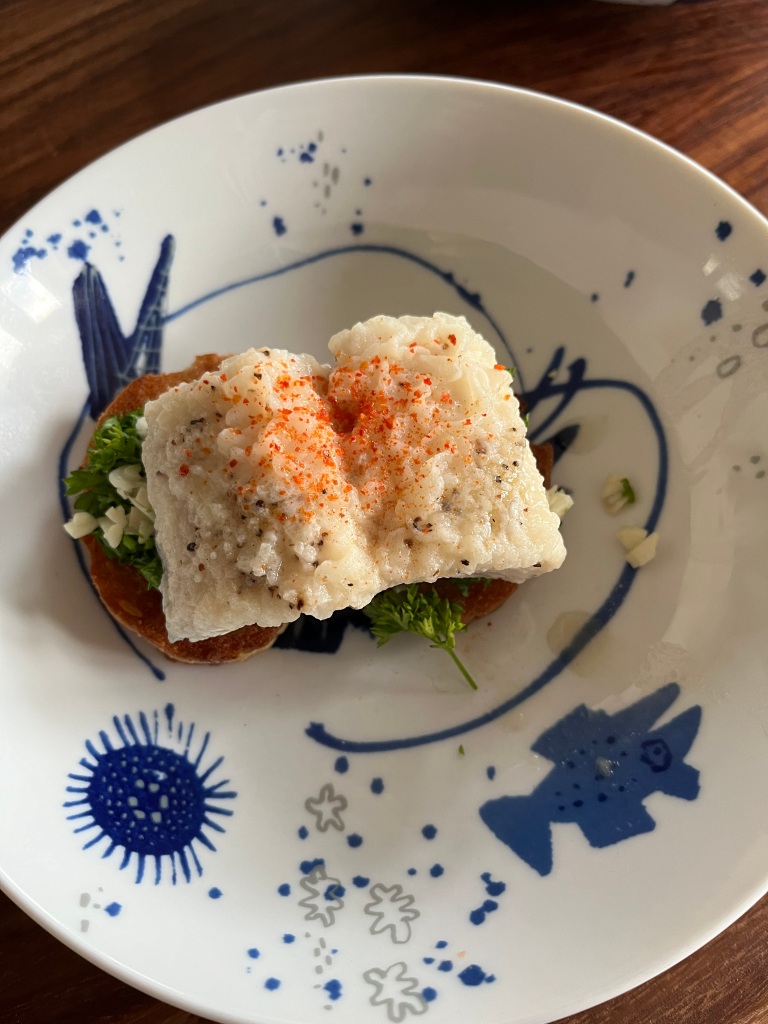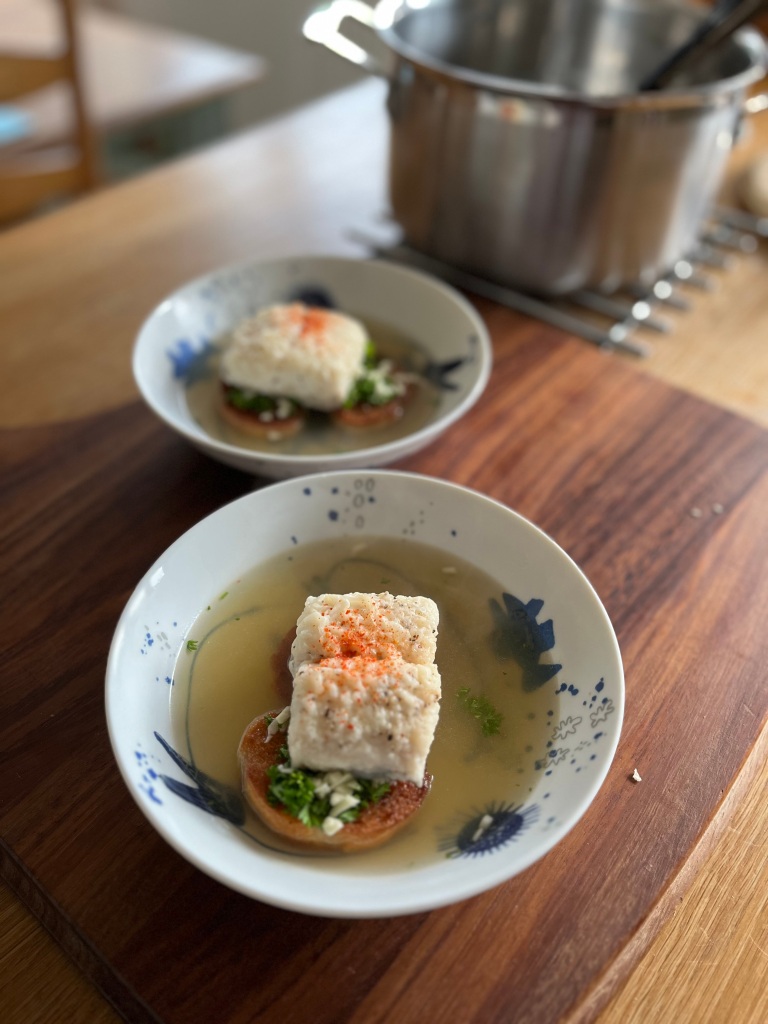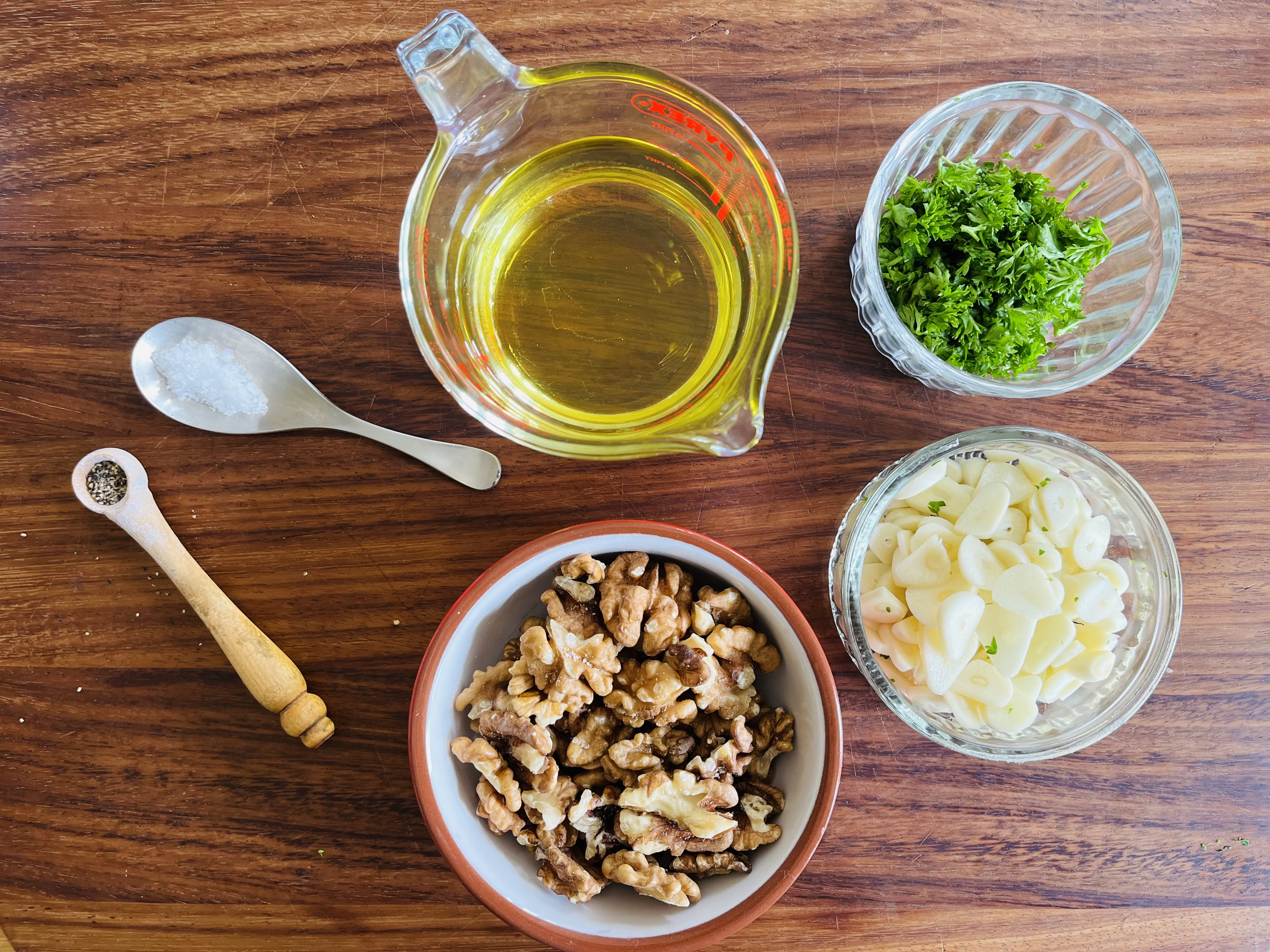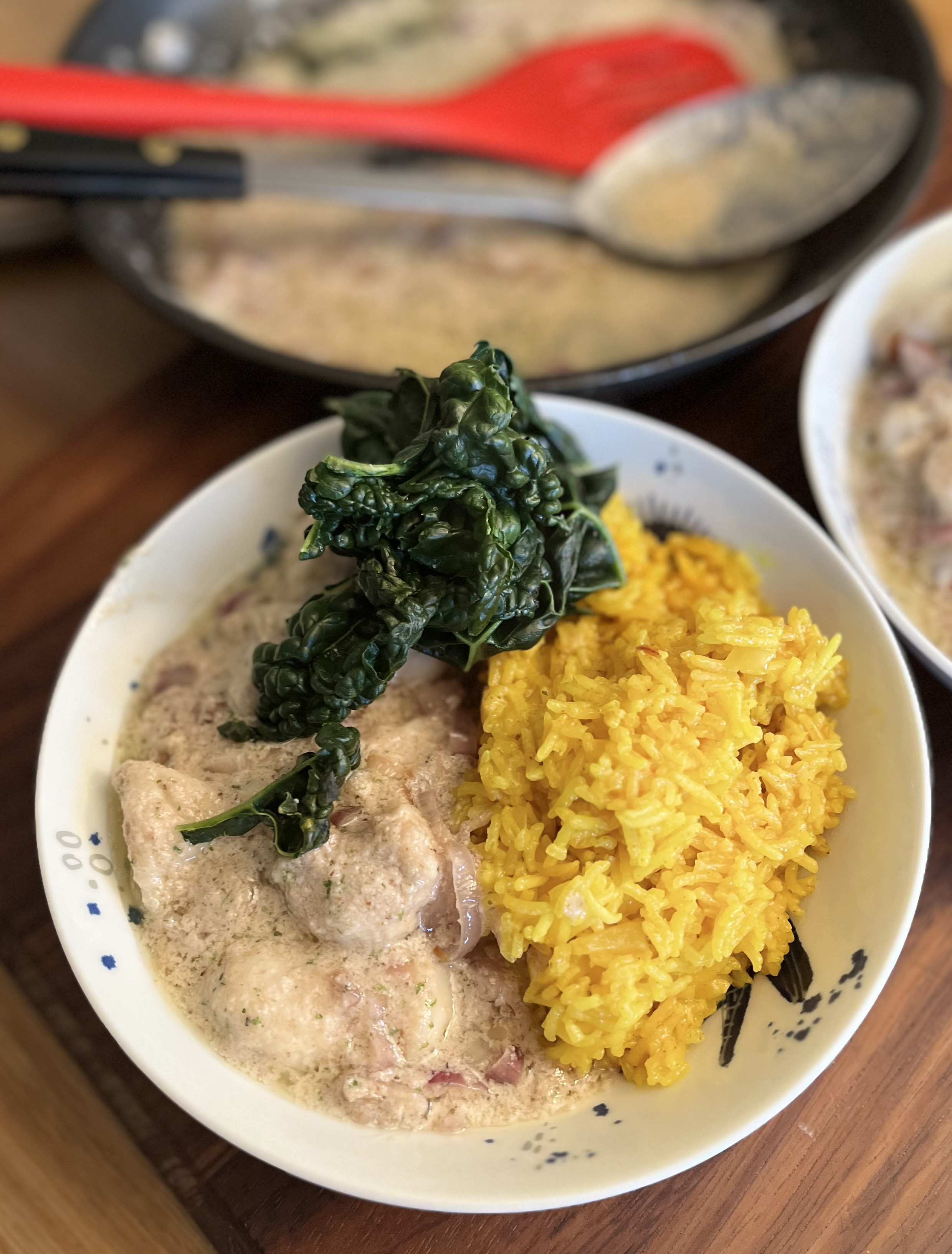Traditional meals in South-West France often start with a soup, made from stock and left-over vegetables, bulked up with yesterday’s bread. They are surprisingly good and just the thing to whet the appetite for the main course. I assumed that la soupe au fromage / cheese soup would be one such. I heated some duck fat in a frying pan and added chopped onions and leeks and cooked slowly until soft. Meanwhile, I lined the base of an earthenware dish with slices of bread (a type called a croustilot), and covered with slices of Cantal, a local cheese. I covered this with the onions and leeks and topped with another layer of bread and cheese. I added some seasoned homemade stock to cover and cooked, uncovered, in the oven for an hour. The result was fabulous – all the delicious liquid had been absorbed by the bread which was soft and tasty, and the cheese was melted and stringy. With seconds (of course!), this turned out to be a one course meal.











